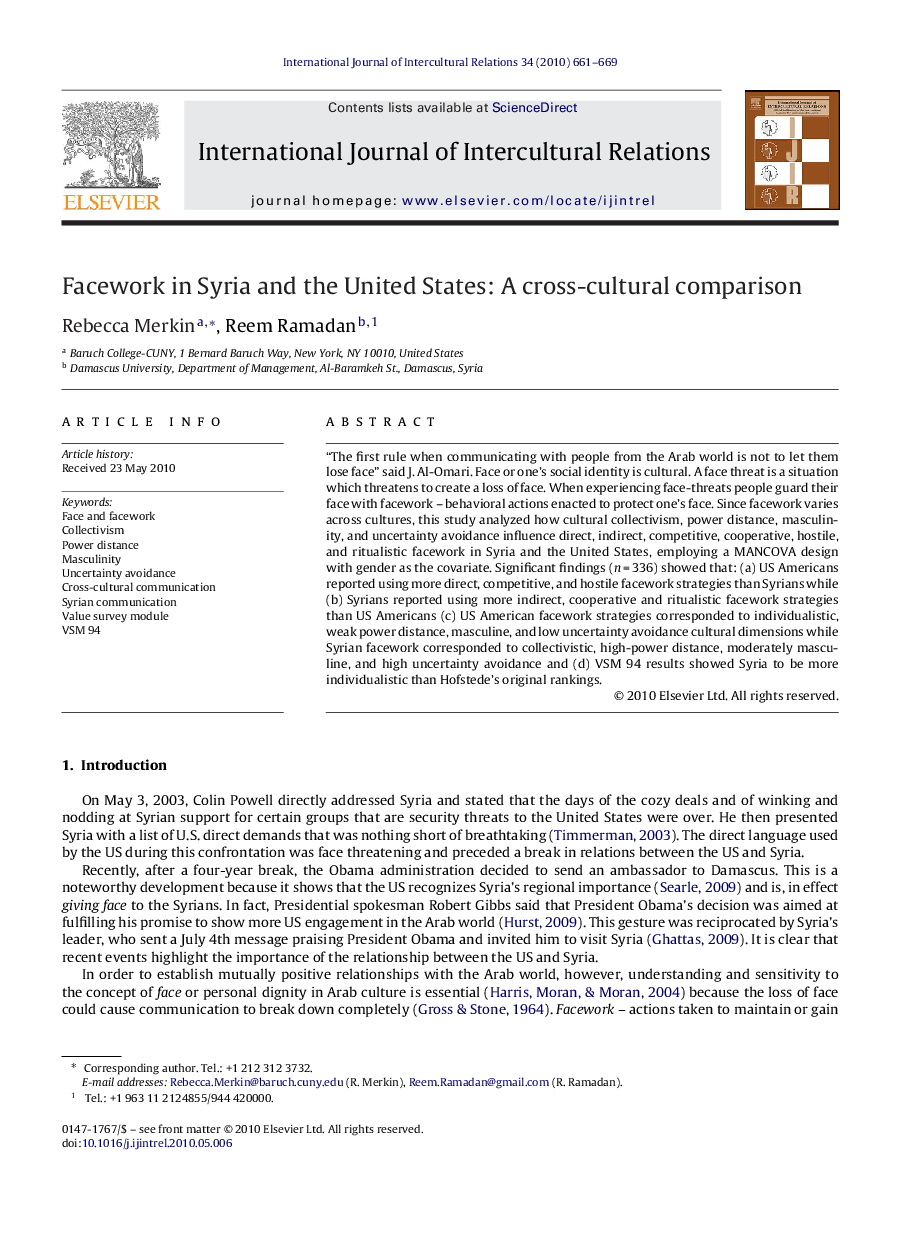| کد مقاله | کد نشریه | سال انتشار | مقاله انگلیسی | نسخه تمام متن |
|---|---|---|---|---|
| 947368 | 1475772 | 2010 | 9 صفحه PDF | دانلود رایگان |

“The first rule when communicating with people from the Arab world is not to let them lose face” said J. Al-Omari. Face or one's social identity is cultural. A face threat is a situation which threatens to create a loss of face. When experiencing face-threats people guard their face with facework – behavioral actions enacted to protect one's face. Since facework varies across cultures, this study analyzed how cultural collectivism, power distance, masculinity, and uncertainty avoidance influence direct, indirect, competitive, cooperative, hostile, and ritualistic facework in Syria and the United States, employing a MANCOVA design with gender as the covariate. Significant findings (n = 336) showed that: (a) US Americans reported using more direct, competitive, and hostile facework strategies than Syrians while (b) Syrians reported using more indirect, cooperative and ritualistic facework strategies than US Americans (c) US American facework strategies corresponded to individualistic, weak power distance, masculine, and low uncertainty avoidance cultural dimensions while Syrian facework corresponded to collectivistic, high-power distance, moderately masculine, and high uncertainty avoidance and (d) VSM 94 results showed Syria to be more individualistic than Hofstede's original rankings.
Journal: International Journal of Intercultural Relations - Volume 34, Issue 6, November 2010, Pages 661–669